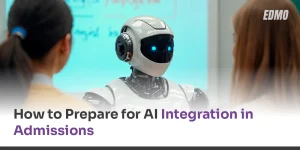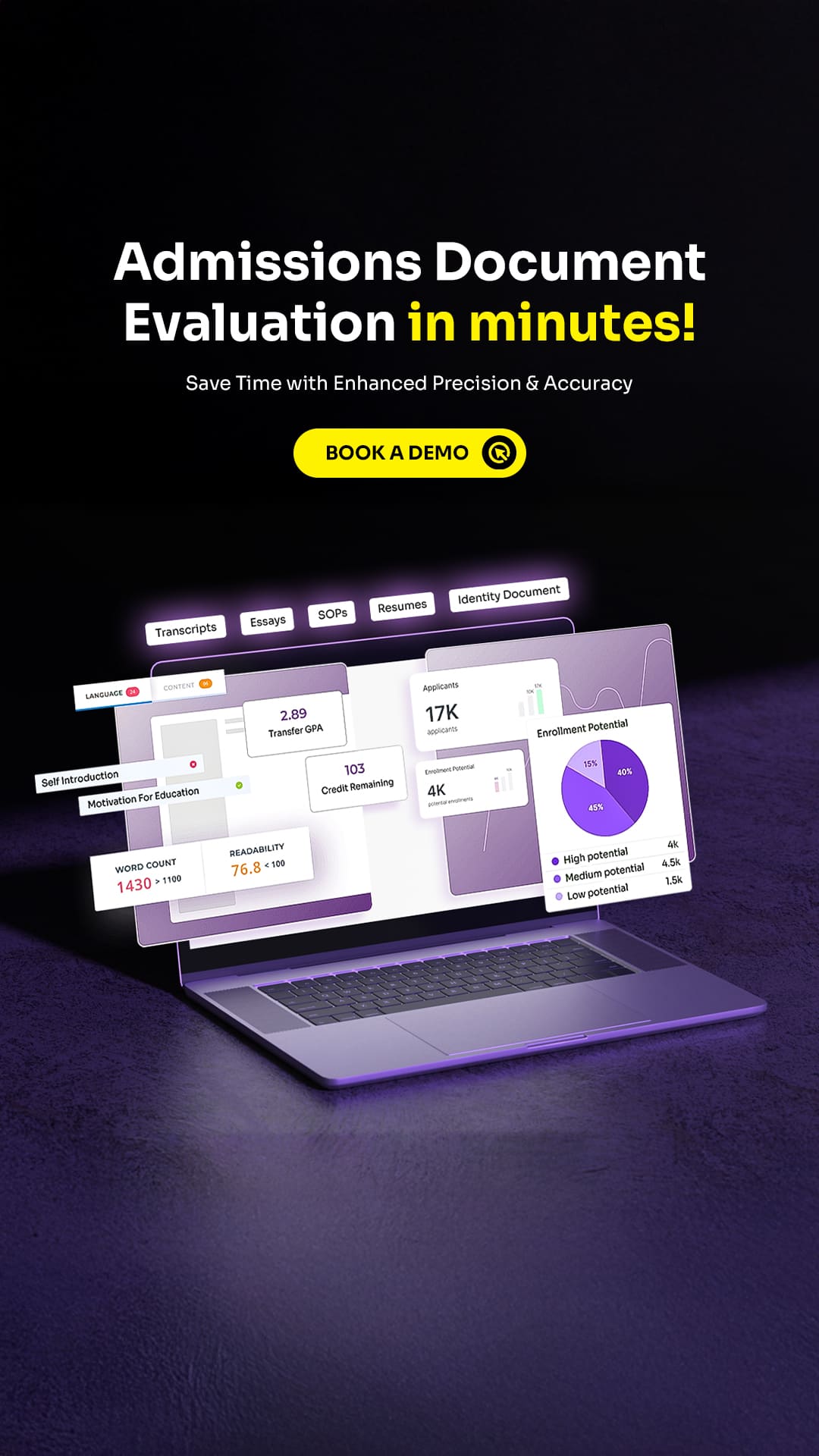Race, nationality, class, gender, political and religious convictions, sexuality, and age are mere examples of diversity and inclusion. This can be seen in a classroom as well because technology links students with foreign cultures, making the learning environment global. Let’s dive deeper into how artificial intelligence is quickly evolving and altering the face of the education industry by bringing in more inclusivity and diversity.
Table Of Contents
Artificial intelligence (AI) is not a novel technology or topic for discussion. Many historical writers and science fiction films foretold its ascent to prominence. While it hasn’t gone as planned yet, the technology is here and pushing improvements across many industries. It is rare that technology that has a broad influence on all industries, including education, gets launched. However, this is what artificial intelligence is all about.
The majority of AI technologies adhere to three fundamental principles:
- Learning: Acquiring and absorbing new experiences and developing new behavioral models.
- Self-correction: Refining algorithms to produce the most accurate outputs.
- Reasoning: Selecting certain algorithms to tackle a specific job.
Here are a few statistics that reflect light on the importance of artificial intelligence in the education sector:
- The global AI in higher education market is projected to reach USD 25.7 billion by 2033, reflecting a compound annual growth rate (CAGR) of 32.0% from 2024 to 2033.
- A recent survey by the Digital Education Council revealed that 86% of students use artificial intelligence in their studies, showcasing its growing role in education.
AI and its role in mitigating bias to enhance diversity and inclusion in higher education
Everything that distinguishes people from one another is known as diversity. Race, ethnicity, gender, sexual orientation, socioeconomic status, ability, age, religious belief, or political conviction are all factors. These factors shape how students, teachers, and everyone else interacts with the world.
People often wonder, “why do students go to school?” The majority of individuals would answer it —to study the three R’s: reading, writing, and arithmetic. On the other hand, a school culture that encourages variety in the classroom teaches pupils something far more critical: how to live and function in a society where each individual is unique.
In an increasingly heterogeneous culture, the ability to relate with peers, coworkers, and neighbors from various backgrounds and experience levels is priceless. Diversity enhances critical thinking skills, fosters empathy, and inspires students to think creatively.
The University of Rhode Island defines diversity in the classroom as “understanding that each student brings unique experiences, strengths, and ideas to our classroom… Diversity is exploring and incorporating these differences in our classroom to enrich learning.”
Here are a few reasons why diversity in the classroom is essential:
- Diversity in the classroom fosters critical thinking.
- It boosts academic performance.
- It encourages more students.
How can AI help mitigate the disparities and enhance inclusivity in the education sector?
1. Task Automation
Professors and teachers are frequently required to manage the classroom environment while also performing numerous organizational and administrative tasks. According to a report in a research paper on writing services, teachers do more than just teach.
They also spend time grading tests, evaluating homework, filing paperwork, preparing progress reports, organizing resources and materials for lectures, managing teaching materials, and so on. There is a lot of work involved.
They spend a lot of time on non-teaching chores, which overwhelms them. Artificial intelligence will automate these procedures, giving teachers more time to focus on their core teaching job without being distracted by administrative duties.
2. Personalized Learning
AI can ensure that instructional software is tailored to the needs of each individual. There is already adaptive learning software, games, and programs for pupils. This use of AI is likely to be one of its most significant in education, as it makes learning more pleasant and smoother and cuts beyond personal knowledge.
This technique focuses on each student’s requirements, stressing specific themes in which pupils are weak and repeating courses they have not mastered. AI will produce custom-tailored education, so teachers will only give assistance and support when students require it.
3. Universal Access
Through AI capabilities, educational courses can become internationally accessible to all students, including those with hearing or visual impairments or who speak various languages. Students receive real-time subtitles for whatever the teacher says with a PowerPoint plugin like Presentation Translator.
This offers new opportunities for children who need to learn at different levels, desire to learn a topic that is not offered at their school or is unwell and absent from school. AI has the potential to break through the barriers that exist between traditional grade levels and schools.
4. Smart Content Creation
According to Paul Barry, lab report writer at assignment writing service, AI can assist teachers in creating various material kinds.
- Digital lessons: AI can assist in creating bite-sized learning, study guides, and digital textbooks, all within the context of digital learning.
- Information visualization: There are several methods to view information that AI can power, including simulation, visualization, and web-based learning settings.
- Learning content updates: AI can develop and update learning content regularly. This guarantees that information is current.
5. Teaching the Teacher
Teachers mustn’t rely on their previous residual knowledge. There is more information that they must know and teach to the kids. Not to add that they study and teach within a narrow scope, even though there are many other subjects they can learn.
AI allows teachers to access a wealth of information at their fingertips. This helps individuals stay educated on subjects they didn’t know before or improve on their previous knowledge. They will be more well-rounded and have a more in-depth and comprehensive knowledge base to compete with 21st-century kids.
6. Identify Classroom Weaknesses
Integrating AI into a sector would replace industrial personnel, causing people to lose their employment. This isn’t correct. In truth, AI is not intended to replace instructors in the classroom. It’s designed to be a supplement to them.
AI may supplement a teacher’s work in a classroom to discover some of the classroom’s flaws. For example, AI will detect pupils failing to answer particular questions. By informing the teachers, they are made aware that they must re-teach the content since the kids have not yet grasped it. This will hold instructors more accountable and force them to follow effective teaching techniques.
7. 24/7 Assistance
Teachers aren’t the only ones who have access to a flood of knowledge; thanks to AI, students do as well. This implies that users may use AI bots to seek assistance on any topic at any time. Traditionally, students only obtain answers to their difficulties when they meet with their lecturers or professors and have the opportunity to ask them questions in class. Fortunately, they will no longer have to wait that long.
Several AI-powered chatbots are designed exclusively for the education industry. They serve as students’ assistants around the clock, answering their questions whenever they arise. As a result, they do not have to wait to meet the professor in their office or the classroom.
Conclusion
Anyone aware of worldwide trends in many businesses would recognize that personalization is at the top of the list. This is due to the advancement of artificial intelligence, which benefits the education industry. AI assists teachers in raising their game by supplying them with all the knowledge they require.
It also enables teachers to generate information tailored to their student’s needs, assuring individualized learning. It automates chores, giving teachers more time to teach and significantly influencing their pupils. AI also helps to bring in more diversity and inclusivity in the education system, which enhances the teaching method of the faculties.
Also Read: Five emerging marketing trends in higher ed
How Artificial Intelligence is transforming higher education?
How can AI mitigate bias to enhance diversity and inclusion in higher education?










No comments yet. Be the first to comment!
Leave a Comment